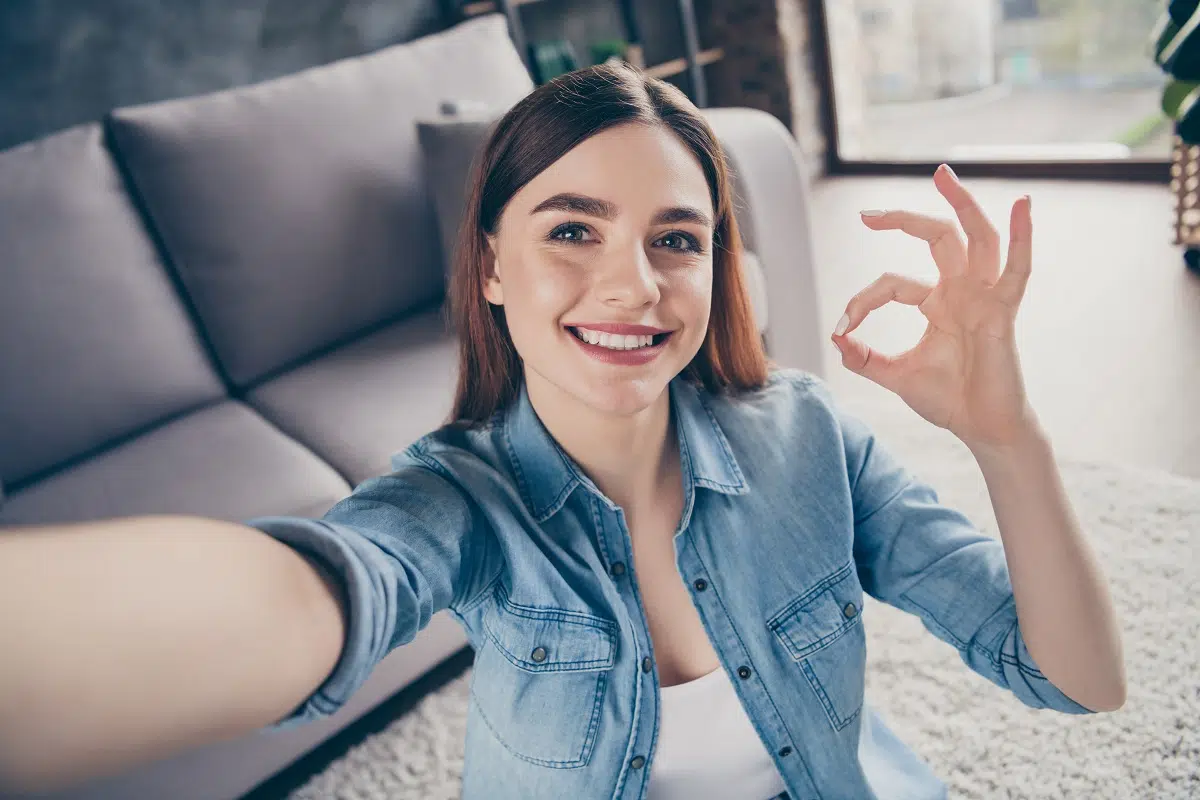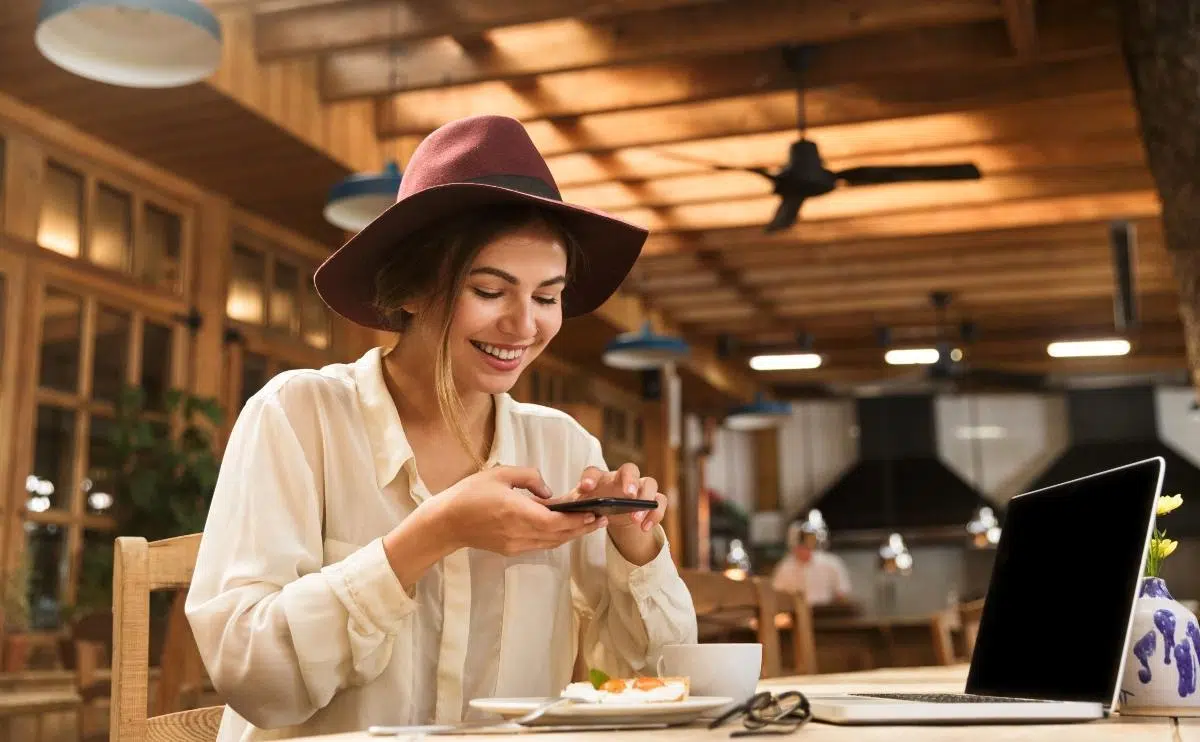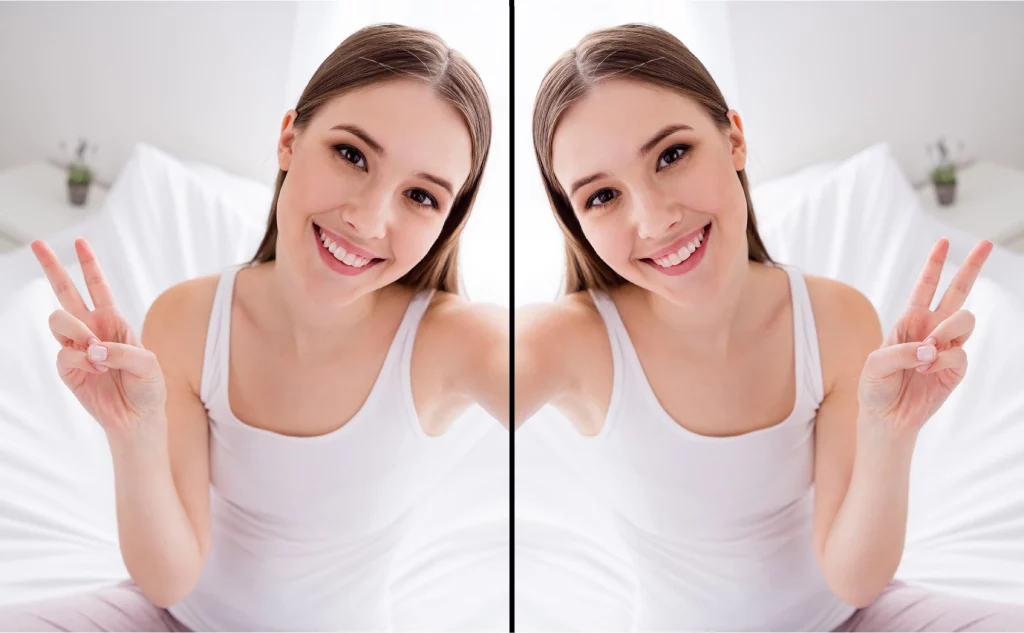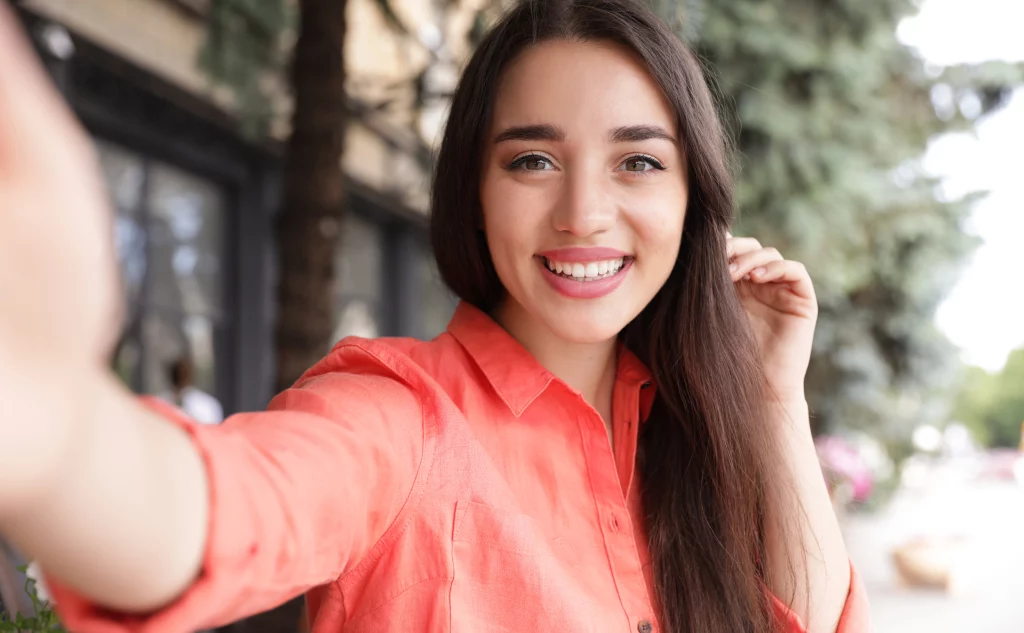Why are upside down photography tricks becoming a go-to for selfie enthusiasts? It’s all about repositioning the lens. When you flip your phone upside down to take a selfie, the lens’s location changes in relation to the phone’s body and the subject, often resulting in a lower camera angle.
This shift in perspective can significantly transform the look of your photos. Many people are now preferring the unique and captivating visuals offered by this upside-down approach.
Interested in mastering these upside down photography tricks for your selfies? You’re in the perfect spot. Keep reading to learn more about this intriguing trend!
How Do Elevated Camera Angles Create Problems?
Take a look at professional photos of models or actors. If you think about the camera angles, you will quickly notice a theme. The vast majority of the photos are taken relatively straight on. It’s uncommon to feel like the camera is looking down on the models from above.
Why is that? Are photographers unable to get the camera high enough to take an elevated photo? In the age of drones, that’s difficult to imagine.
Instead, this is about what are considered flattering angles. When you shoot a picture from above a person, you get a lot of forehead and the top of the person’s head. While there is nothing inherently wrong with these features, they aren’t usually thought of as flattering.
That’s largely because there is less going on. No one tends to think that a forehead is particularly repulsive, but neither is it an attractive feature that captivates attention. It’s just a forehead, and the same can be said for the top of the head.
If you ever do see a professional photo from an elevated position, the model is usually staged to face the camera. They will be lying down or looking up in an exaggerated way. The reason for this staging is that it prevents the shot from overemphasizing the forehead or top of the head.
In other words, photographers avoid elevated camera angles because they tend to highlight boring, uninteresting, or unflattering features on a person.
What Are the Advantages of Lower Camera Angles?
When you lower the camera angle, everything changes. Suddenly, you are taking the shot from eye level or a similar angle. This is a lot closer to a natural perspective.
When you interact with other people, you usually look at them face-to-face. You are rarely towering over them with a bird’s eye view. That has a lot to do with what you normally find flattering or unflattering.
This comes down to expectations. For most of your daily interactions, you see people from a certain angle. That influences how you think about them. Seeing a person from a different angle can completely change the perspective and hold a heavy impact on how attractive or unattractive they seem in the moment.
This idea is so powerful that it even impacts how you think of yourself. When you look in the bathroom mirror, you are always at eye level with yourself. That’s just how physics works. So, the primary way you see yourself is based on this angle.
If you take a selfie from a significantly different angle, it will look strange to you. As we can all be a little too self-critical at times, seeing yourself from a strange perspective might also feel unflattering.
In addition to expectations is the nature of features and relief. As already stated, an elevated camera vantage emphasizes the forehead and the top of the head. When you think about attractive features on a person, your mind probably drifts to eyes, nose, cheeks, lips or other such features.
This is because these features have clear lines and shapes. They are well defined in a way that a forehead rarely can be. Even when you think about attractive hair, it probably has a clear shape and/or style to it. You’re probably also thinking about how it frames the person’s face.

A lower camera angle puts the picture’s focus on these features that we all tend to find more interesting and appealing. So, a lower camera angle, much more often than not, will produce a selfie that you think looks better.
upside down photography tricks
This is pretty simple on the surface. The upside down photography tricks is prettun cool. Just about every smartphone places the camera at or near the top of the phone. When you hold the phone right-side-up for a selfie, the camera is located above the palm of your hand.
Hold your hand in the exact same way and turn the phone upside down. When you do that, the camera holds a lower position that will be much closer to your eye level. You’re only changing the height of the camera by the length of the phone (a little less than that if you want to be very accurate), but it still makes a considerable difference in the final picture.
Just a handful of inches can change the camera angle enough that you will notice the difference at a glance, and you can experiment right now. Take a normal selfie, but pay attention to how high your hand is. Take the same selfie with the phone upside down and your hand in the same place.
You might be tempted to raise your hand higher to change the angle, but for the sake of the experiment, keep your hand in the same place (you can delete any photos you don’t like later). Compare the two pictures and see which one you like more. You might have to rotate the second photo to make a clean comparison (although many phones will do this automatically), but the software doesn’t have to distort the image to rotate the photo.
There’s no guarantee that an upside-down selfie will always look better, but it allows you to exploit the advantages of a lower camera angle. On average, most people will prefer the upside-down method. Ultimately, you can take pictures however you see fit.

What Is the Distortion From Wide-Angle Lenses?
There is another issue at play here. The shape of the lens plays a role in determining the focal length of the camera, and this can ultimately lead to distortion. The focal length of the camera is the distance where an image is at its most clear.
Now, smartphone cameras have automated features that adjust the focal length and digitally compensate for focus issues. But, if you stage the photo closer to the natural focal length of the lens, you get an image with the best clarity possible. This can impact the quality of a selfie.
As for smartphones, the average camera uses a wide-angle lens with a focal length of around four to five millimeters. You don’t want to take a picture of yourself with the phone only five millimeters away. That would be ridiculous. But, this focal length does matter when it comes to optimizing your selfies.
There’s a lot at play here, and professional photographers can go into such detail that it would take hours to explain it all. Let’s keep things simple and only worry about focal length. When the camera has to account for focal length, it has to distort the image in order to fit everything in the view and provide quality resolution.
In general, you get more distortion when you get farther away from the photographic target. If you can bring the camera in just a little bit, it can help with this distortion. This is not referring to pixelation, color theory, or any number of other photography concepts.
What happens in this case of distortion is that the phone will literally change the shape of your face in the image in order to try to auto-adjust the focus and framing of the picture.
When you flip the phone upside down, you can bring the lens a little closer and still get a good image because of the camera angle. By coming in a little closer, you can reduce the distortion the phone creates with its automated adjustments. An upside-down selfie is truer to the real shape of your head and face, and in the vast majority of cases, this leads to a better photo.
If you participated in the selfie experiment above, you can compare those photos one more time. Being as objective as possible, is your nose the same shape in each picture? How about your forehead? Eyes?
You can compare feature to feature, and you’ll notice that the photos do not represent the same proportions. You know that your face didn’t suddenly change shape between the photos, and you held your hand in the same position. Some of those changes are from the camera angle, but some of them are because of distortion.

Is It Always Better to Take Selfies Upside Down?
No. For all that we can talk about better camera angles and distortion, the truth is that photography does not adhere to ironclad rules. Sometimes, a higher camera angle captures what you’re really after. You might be trying to get a snap of your pet behind you, and the higher camera angle frames the two of you together better.
That’s a specific example, but there are countless cases where the higher camera angle offers advantages. Play around with your options and use what you like best. But, when you learn about more techniques, you have more power to experiment and ultimately take a picture that you truly like.


